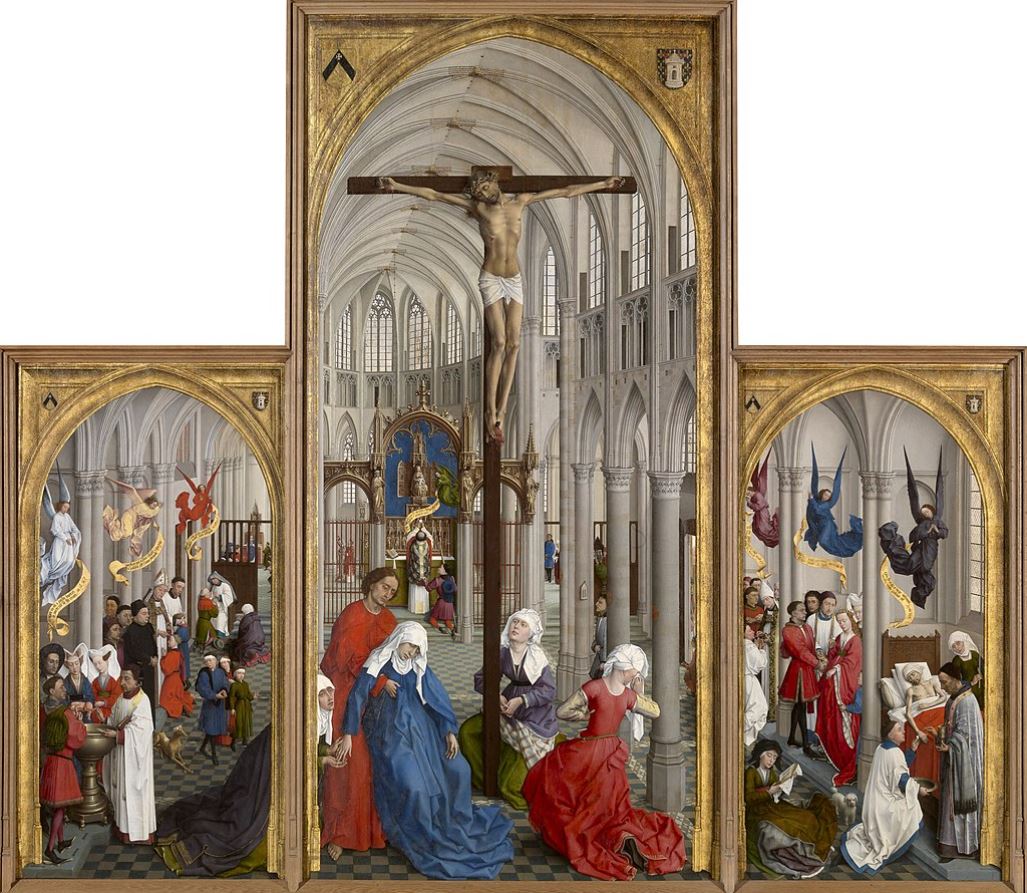The Northern Renaissance emerged in the region of modern-day Belgium and this particular painter is considered to be one of the greats during the 15th century.
Rogier van der Weyden (1399-1464) earned commissions from all around Europe as the nobility wanted to get their hands on the Early Netherlandisch paintings produced by this incredible talent.
His body of work, just like his predecessors Jan van Eyck and Robert Campin, mainly consists of religious art and portraits and often consisted of large triptychs.
We don’t know much about the man’s life except that he settled in Brussels in his adult years. Because his artworks were exported to foreign nations, they can be admired in museums all around the world today.
In this article, I’ve made a compilation of some of the most famous Rogier van der Weyden paintings.
1. The Descent from the Cross
- Date created: Before 1443
- Dimensions: 220 x 262 centimeters (86.6 x 103.1 inches)
- Location: Prado Museum, Madrid, Spain
The Descent from the Cross is believed to have been completed in the mid-1430s and as the title suggests, depicts the moment Jesus Christ’s dead body is lowered from the cross following his crucifixion.
Like most of van der Weyden’s work, this date is an estimate based on the work’s style. It’s believed that this painting established him as a master which eventually led to an incredibly successful career.
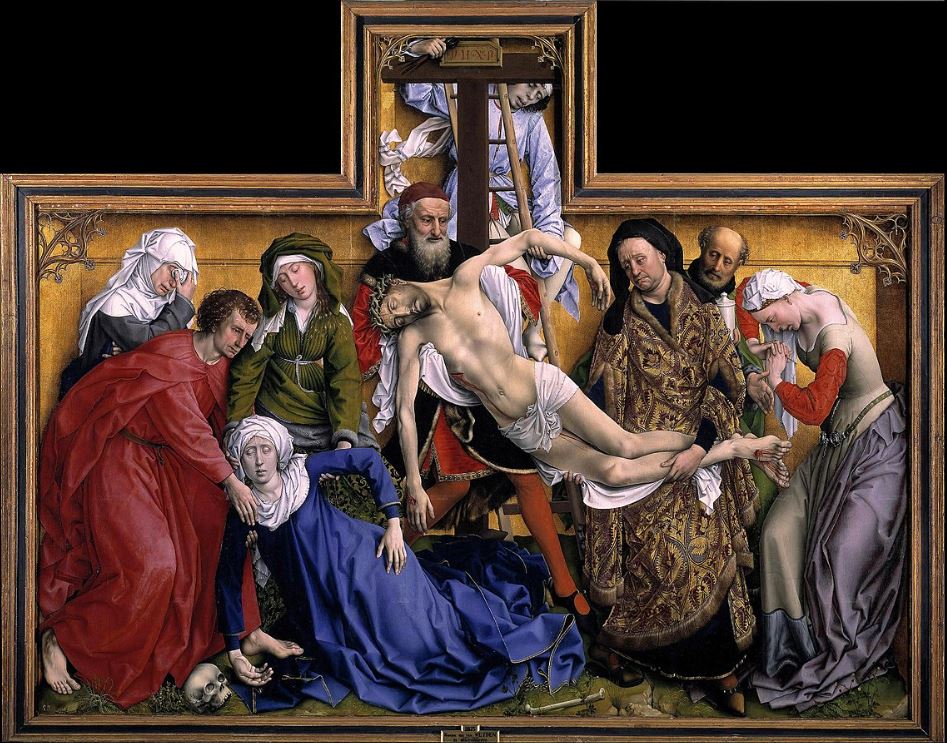
2. Saint Luke Drawing the Virgin
- Date created: 1435-1440
- Dimensions: 137.5 × 110.8 centimeters (54.12 in × 43.2 inches)
- Location: Museum of Fine Arts, Boston, United States
Saint Luke Drawing the Virgin is one of several paintings by Rogier van der Weyden that show the fact that he was highly influenced by his colleague Jan van Eyck (1390-1441) (who was still alive when he completed this work).
The Virgin and her child Jesus Christ accompanied by a saint was a common theme for Early Netherlandisch artists. The composition looks strikingly similar to van Eyck’s painting titled “Madonna of Chancellor Rolin.”
Interesting fact: The man next to Mary is probably a self-portrait by the artist.
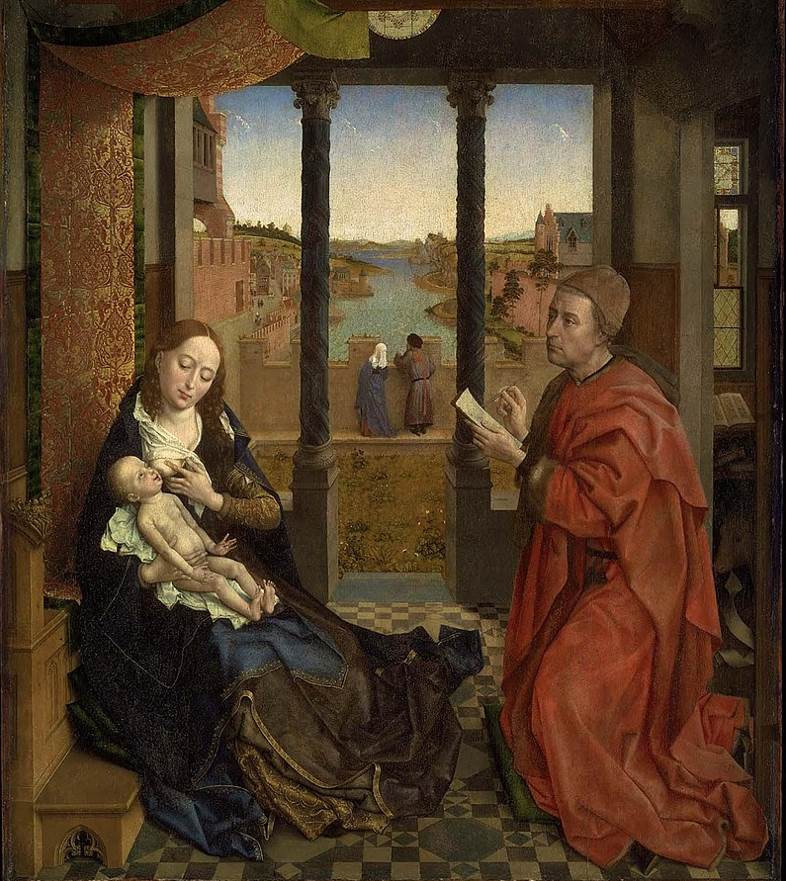
3. Miraflores Altarpiece
- Date created: 1440
- Dimensions: 71 x 43 centimeters (27.9 x 16.9 inches) (each of the 3 panels)
- Location: Gemäldegalerie, Berlin, Germany
The Miraflores Altarpiece is a triptych religious painting that depicts three different scenes related to the life of Jesus Christ. The first panel depicts the Holy Family, the second a Pietà, and the third Christ’s appearance to Mary.
These three scenes depict the birth, death, and resurrection of Jesus, which were common subjects in religious art since the Middle Ages. The paintings are full of rich colors and delicate religious symbolism.
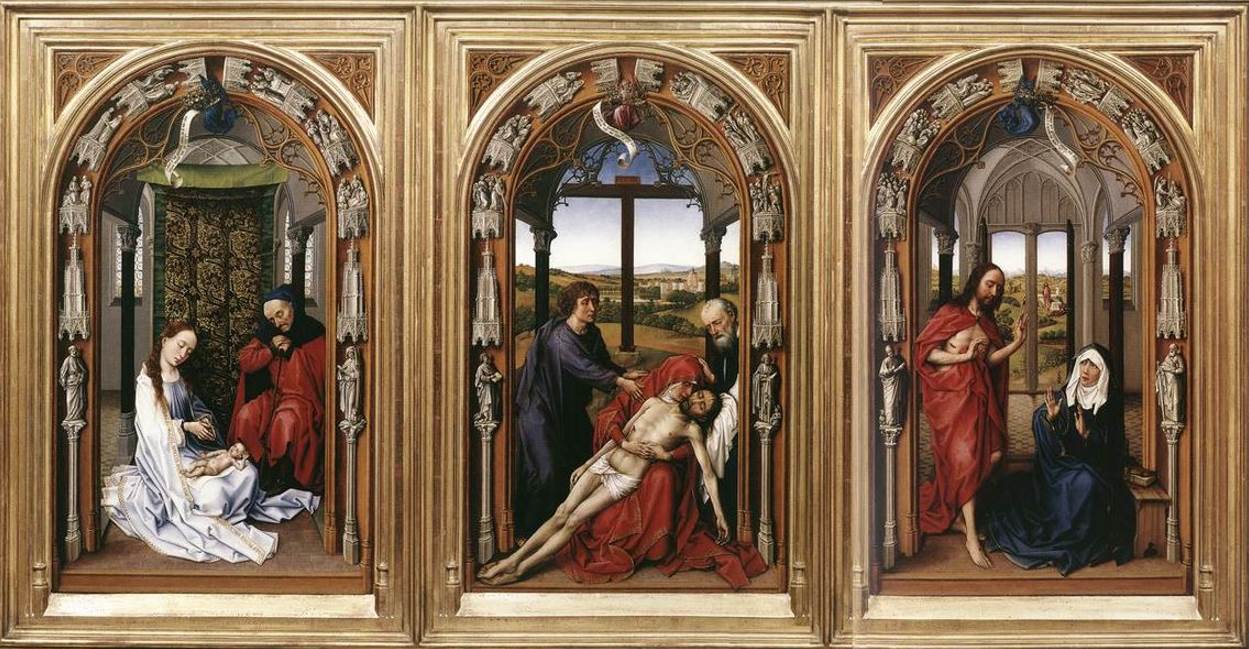
4. Portrait of a Lady
- Date created: 1460
- Dimensions: 34 × 25.5 centimeters (13 × 10 inches)
- Location: National Gallery of Art, Washington D.C., United States
Portrait of a Lady is the title of one of the most famous portraits in the rich oeuvre of Rogier van der Weyden. It highlights the features of what was considered to be the idealized beauty of contemporary women.
This painting was completed during the final decade of the artist’s life and it was one of many similar commissions he earned during this period. Unfortunately, the identity of the woman will foreign remain an unsolved mystery.
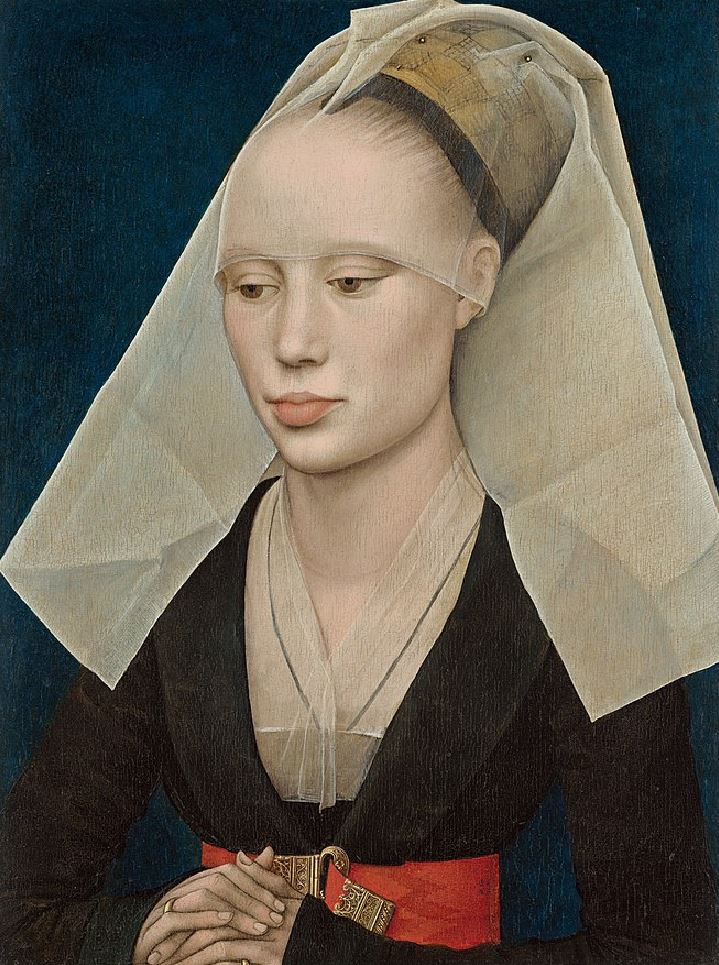
5. Virgin and Child
- Date created: After 1454
- Dimensions: 31.9 × 22.9 centimeters (12.6 × 9 inches)
- Location: Museum of Fine Arts Houston, Houston, United States
Virgin and Child is another painting by Rogier van der Weyden that depicts a common subject in art during the 15th century. The Virgin Mary who tenderly caresses her infant while apparently in deep contemplation was very popular at the time.
What’s remarkable about this work is that it was long believed to be a copy by one of the painter’s followers. A thorough examination using modern techniques revealed that it was indeed by the hand of the famous artist.
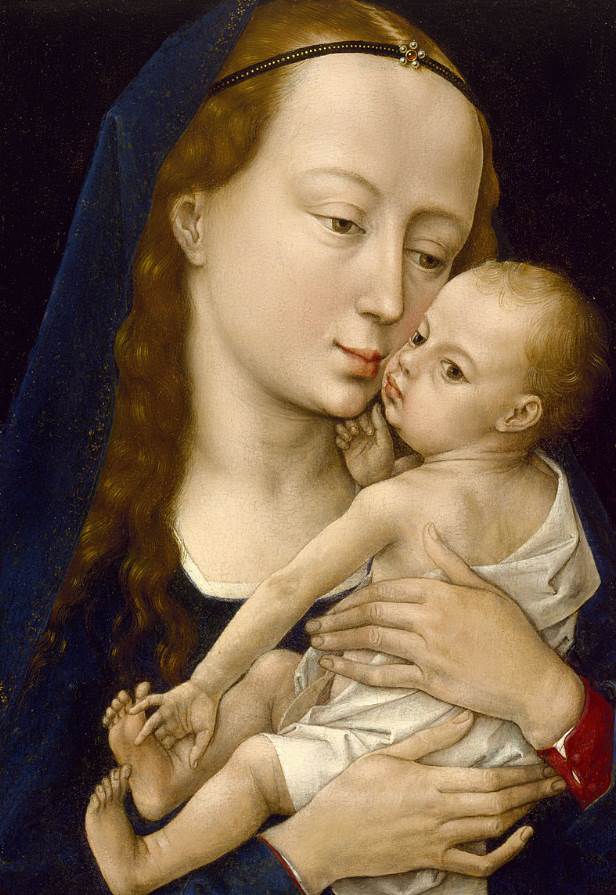
6. Portrait of Philippe I de Croÿ
- Date created: 1460
- Dimensions: 49 x 30 centimeters (19.2 x 11.8 inches)
- Location: Royal Museum of Fine Arts Antwerp, Antwerp, Belgium
The Portrait of Philippe I de Croÿ is the right panel of a diptych that also features a Virgin and Child painting. The left panel is part of the collection of the Huntington in San Marino, California.
Philip I de Croÿ (1435–1511) was a count and prominent member of the House of Croÿ, a noble family who became Princes of the Holy Roman Empire in the year 1594. These types of work were personal commissions for devotional purposes.
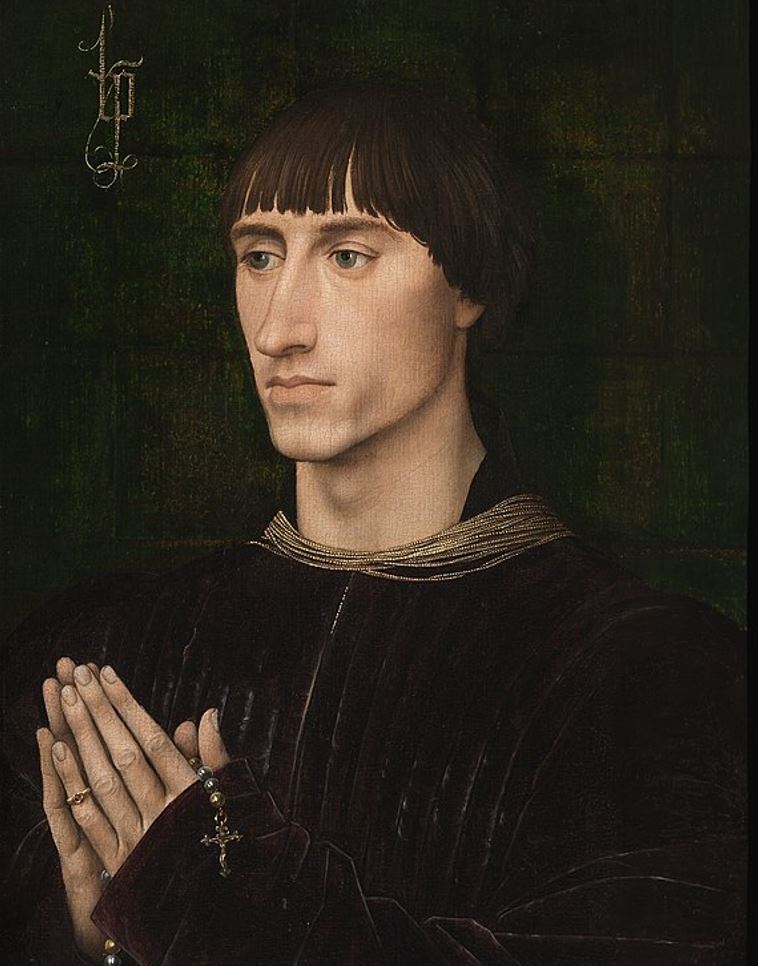
7. Pietà
- Date created: 1441
- Dimensions: 32.5 x 47.2 centimeters (12.7 x 18.5 inches)
- Location: Royal Museums of Fine Arts of Belgium, Brussels, Belgium
Pietà is the title of a painting that is solely dedicated to this particular scene in the Passion of Christ. It was completed in the year that the artist’s colleague, Jan van Eyck, passed away.
The painting in Brussels is the original version but numerous copies exist in museums all around the world. An examination of the work concluded the fact that it was by the hand of van der Weyden, while other versions might have been done by his workshop.
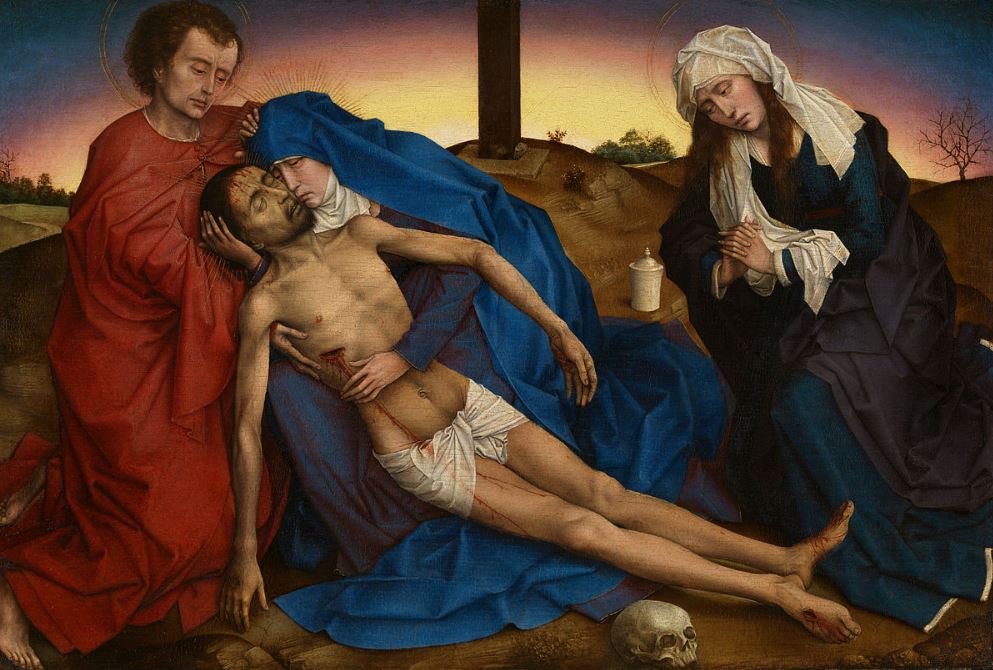
8. The Magdalen Reading
- Date created: 1435-1438
- Dimensions: 62.2 × 54.4 centimeters (24.5 × 21.4 inches)
- Location: National Gallery, London, United Kingdom
The Magdalen Reading is a highly detailed painting that depicts a seated woman who is reading a book. The woman has been identified as Magdalen, one of Jesus’ followers who witnessed his crucifixion, by the ointment placed in the foreground.
As in most Gothic-style paintings of this period, the woman is highly idealized with pale skin and high cheekbones. Two figures and a landscape can be seen in the background but are only partially visible because the painting was cut out.
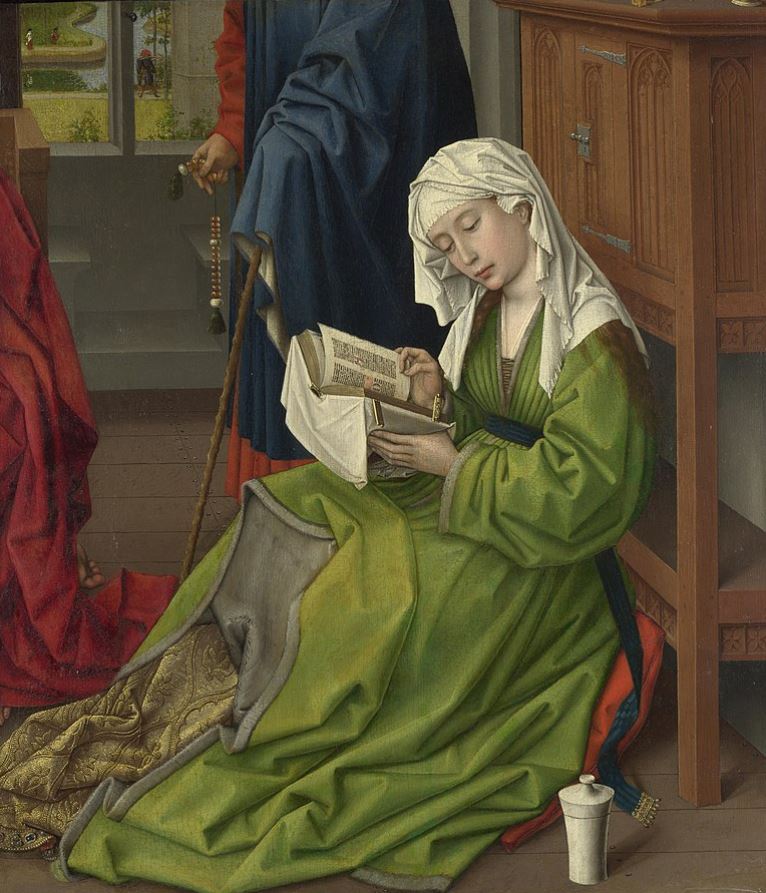
9. Christ on the Cross with Mary and St John
- Date created: 1443-1445
- Dimensions: 101 x 70 centimeters (39.7 x 27.5 inches)
- Location: Kunsthistorisches Museum, Vienna, Austria
Christ on the Cross with Mary and St John is yet another triptych by Rogier van der Weyden and one of his most famous Crucifixion paintings. The central part features Mary and Saint John and the two donors of the painting who are kneeling nearby.
Mary Magdalene can be seen kneeling in the left panel and the right panel depicts Saint Veronica. The landscape in the background not only merges into all three panels but also depicts Jerusalem in the background.
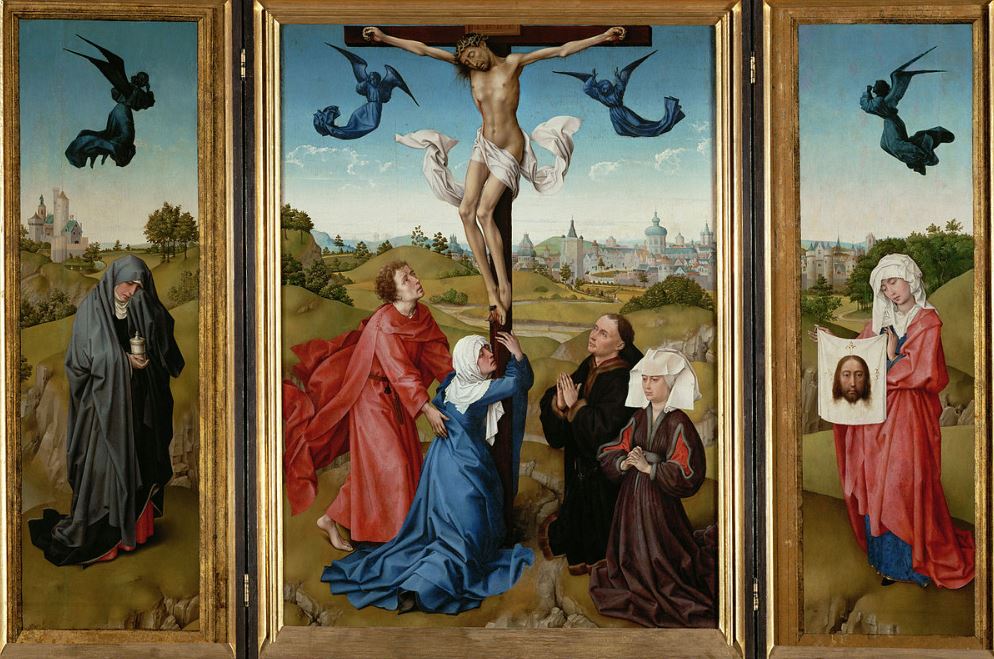
10. Seven Sacraments Altarpiece
- Date created: 1445-1450
- Dimensions: 200 × 223 centimeters (79 × 88 inches)
- Location: Royal Museum of Fine Arts Antwerp, Antwerp, Belgium
The Seven Sacraments Altarpiece is a very complex triptych that depicts the Seven Sacraments of the Catholic Church. On the left panel, you can see baptism, confirmation, and confession.
The right panel depicts the ordination of a priest, marriage, and the last rites, while the central panel features the Eucharist behind a crucifixion in the foreground. The people in the work are likely the donors of the work.
